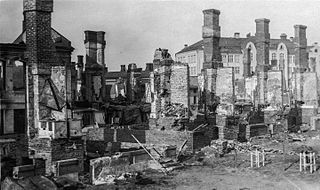
The Finnish Civil War was a civil war in Finland in 1918 fought for the leadership and control of the country between White Finland and the Finnish Socialist Workers' Republic during the country's transition from a grand duchy of the Russian Empire to an independent state. The clashes took place in the context of the national, political, and social turmoil caused by World War I in Europe. The war was fought between the Red Guards, led by a section of the Social Democratic Party, and the White Guards, conducted by the senate and those who opposed socialism with assistance late in the war by the German Imperial Army at the request of the Finnish civil government. The paramilitary Red Guards, which were composed of industrial and agrarian workers, controlled the cities and industrial centers of southern Finland. The paramilitary White Guards, which consisted of land owners and those in the middle and upper classes, controlled rural central and northern Finland, and were led by General C. G. E. Mannerheim.

Paavo Juho Talvela was a Finnish general of the infantry, Knight of the Mannerheim Cross and a member of the Jäger movement. He participated in the Eastern Front of World War I, the Finnish Civil War, the Finnish Kinship Wars, the Winter War and the Continuation War.
The Aunus expedition was an attempt by Finnish volunteers to occupy parts of East Karelia in 1919, during the Russian Civil War. Aunus is the Finnish name for Olonets Karelia. This expedition was one of many Finnic "kinship wars" (heimosodat) fought against forces of Soviet Russia after the Russian Revolution of 1917 and during the Russian Civil War.
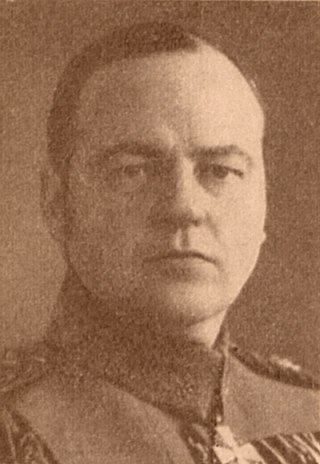
Kurt Martti Wallenius was a Finnish Major General.

The 27th Jäger Battalion, officially called the Royal Prussian 27th Jäger Battalion was a jäger battalion of the Imperial German Army during World War I. The unit mainly consisted of finnish volunteers that were a part of the Jäger movement.

The Battle of Tampere was a 1918 Finnish Civil War battle, fought in Tampere, Finland from 15 March to 6 April between the Whites and the Reds. It is the most famous and the heaviest of all the Finnish Civil War battles. Today it is particularly remembered for its bloody aftermath as the Whites executed hundreds of capitulated Reds and took 11,000 prisoners placed in the Kalevankangas camp.
Aadolf Fredrik Svanström was a Finnish middle-distance runner, who competed in the 1908 Summer Olympics in London.

Juho Julius Saaristo was a Finnish track and field athlete. He won two medals at the 1912 Olympics: a silver in conventional javelin throw and a gold in the two-handed javelin throw, a one-time Olympic event in which the total was a sum of best throws with the right hand and with the left hand. He finished fourth in the javelin throw at the 1920 Olympics. Saaristo held the Finnish national title in the javelin in 1910, 1911 and 1919.

Sulo Arvi Pohjanpää was a Finnish Olympic gymnast, judge and writer.
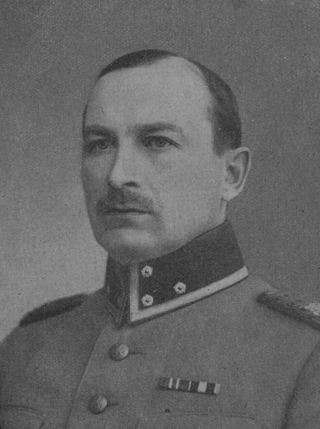
Väinö Edward Tiiri was a Finnish gymnast who won two Olympic medals.

The Whites, or White Finland, is the name used to refer to the refugee government and those forces who fought for and under Pehr Evind Svinhufvud's first senate, who were opposed the "Reds", or the Finnish Socialist Workers' Republic, during the Finnish Civil War or the 'Finnish War of Independence', as it is often called by the Whites, in 1918.

Kalervo Kurkiala was a Finnish soldier who later became a pastor. During World War I, he served as a volunteer in the German light infantry, his first engagement being on the Misa River in Latvia on the eastern front in 1916. He was a battalion commander in the White Army during the Finnish Civil War, which broke out in 1918. After being ordained in 1919, for a while he was an army chaplain before assuming civilian duties as a pastor and teacher. For several years, he served with the Seamen's mission in Australia. During World War II, in 1941, Kurkiala volunteered as chaplain to the Finnish volunteer brigade in the Waffen-SS. After the war, for many years, he was a pastor in Sweden.
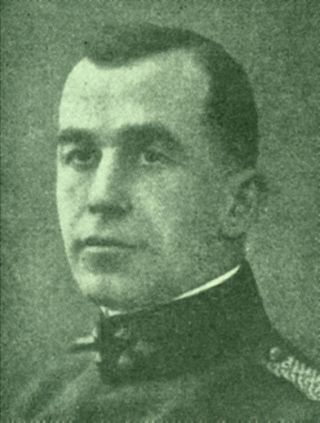
Ernst Wilhelm Eduard Ausfeld (1885–1946) was a German military officer involved in the Finnish Civil War. He was a participant in the Jäger Movement, which trained Finnish volunteers in the German Empire. He participated at the Battle of Tampere and the Battle of Vyborg alongside the White Army. Ausfeld was later awarded the Order of the Cross of Liberty by the Finnish government after the war.

Antti Isotalo was a Finnish Jäger lieutenant, military recruiter, farmer and activist. He served in the German Empire's battalion of Finnish volunteers on the Eastern Front of World War I and briefly in the Finnish Civil War (1918) on the Whites' side. He repeatedly evaded capture by authorities while recruiting men for the battalion in 1915 and 1916. After recovering from wounds sustained in the civil war, he recruited volunteers for the Estonian War of Independence and then joined the Aunus expedition as one of its commanders during Finland's "tribal wars" in 1919.
Gunnar Isak Lindqvist was a Finnish Jäger and a senior lieutenant in the Estonian Army. He had received military training during the First World War as a Jäger and received his baptism of fire on the Eastern Front at Misse River in 1916. Later, he took part in the Finnish Civil War in the White Army as a signals officer and in the Estonian War of Independence as a battalion commander. During his life he served in the armies of three states and was a veteran of the six wars. In the 1930s and 1940s, Lindqvist took part in several Nazi groups.

Arvi Kalsta was a Finnish Jaeger captain, the founder of the Nazi Finnish People's Organisation and a businessman. In the 1930s, the Finnish Nazis who belonged to his supporters were called Kalstaites.
Toivo Tuomas Savolainen, later Karanko was a Finnish Jäger captain and a journalist.
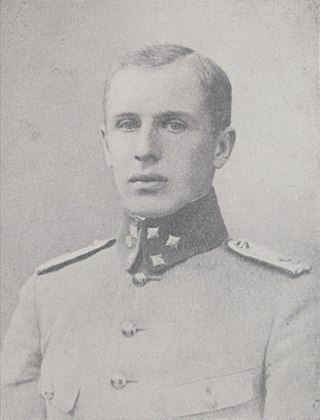
Carl Lennart Nordensvan, was a Finnish soldier and automobile businessman. He is notable for his service as a member of the Finnish Jäger Movement during the First World War and in the Finnish Civil War, for organizing the Finnish Army Automobile Troops following the civil war, as well as for his pioneering efforts in the automobile industry and motor sports in Finland.
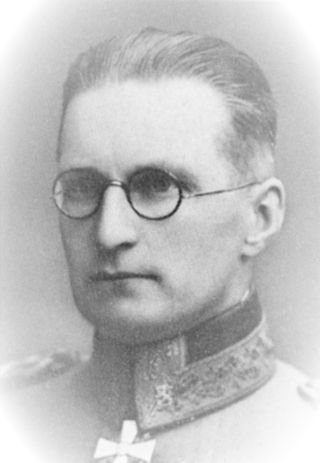
Aarne Silvio Heikinheimo was a Finnish Major General. He is well known for his service in the Finnish Civil War against the Red Guards.
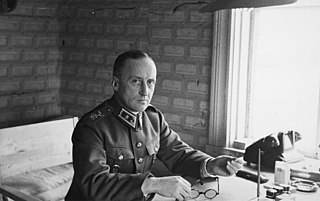
Aarne Leopold Blick was a Finnish lieutenant general, Knight of the Mannerheim Cross and a member of the Jäger movement. He participated in the Eastern Front of World War I, the Finnish Civil War, the Winter War and the Continuation War.
















